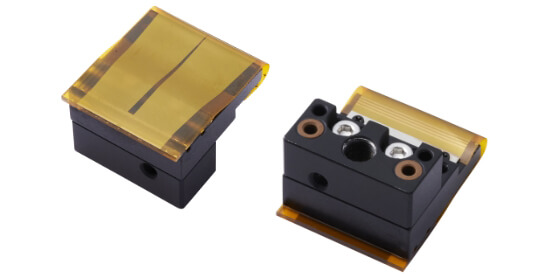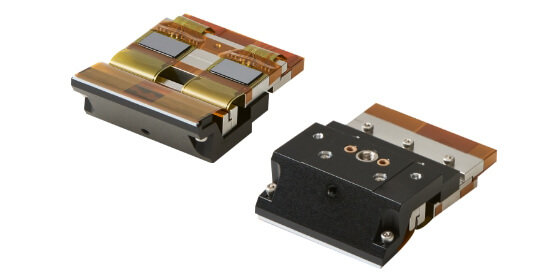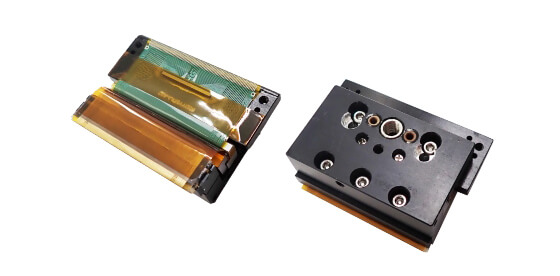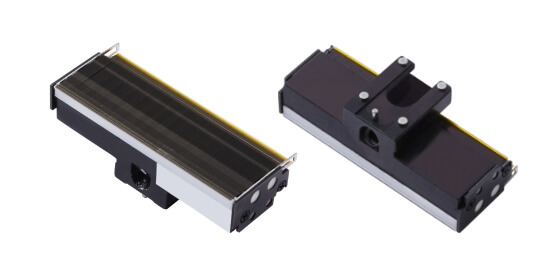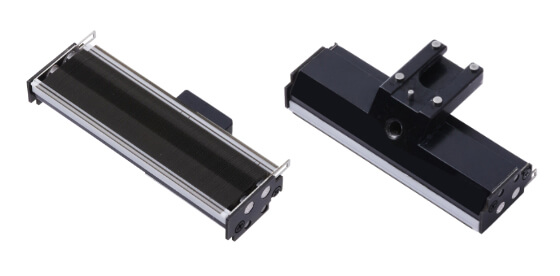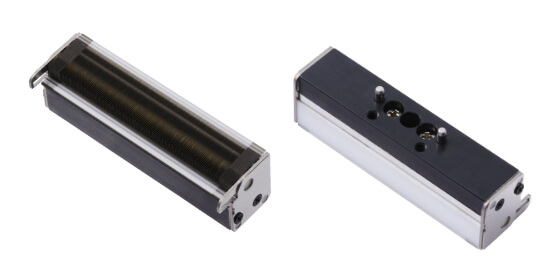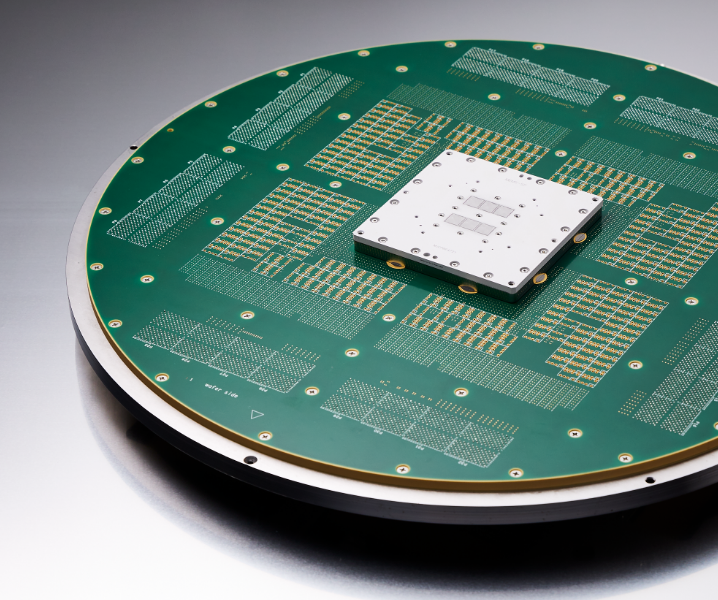Probe Unit

Highly accurate and stable testing for improved productivity
Our probe units provide excellent contact performance and ease of maintenance, which are essential for testing FPDs with increasingly high pin counts and fine pitches. This contributes to high accuracy and stable testing whilst reducing testing costs.
Probe Unit Lineup
| Probe type | Array process | Cell process | |
|---|---|---|---|
| Film type |
E3 |
DE5 |
E3 |
| Blade type |
SFB/UFB |
SFB/UFB |
ZFB |
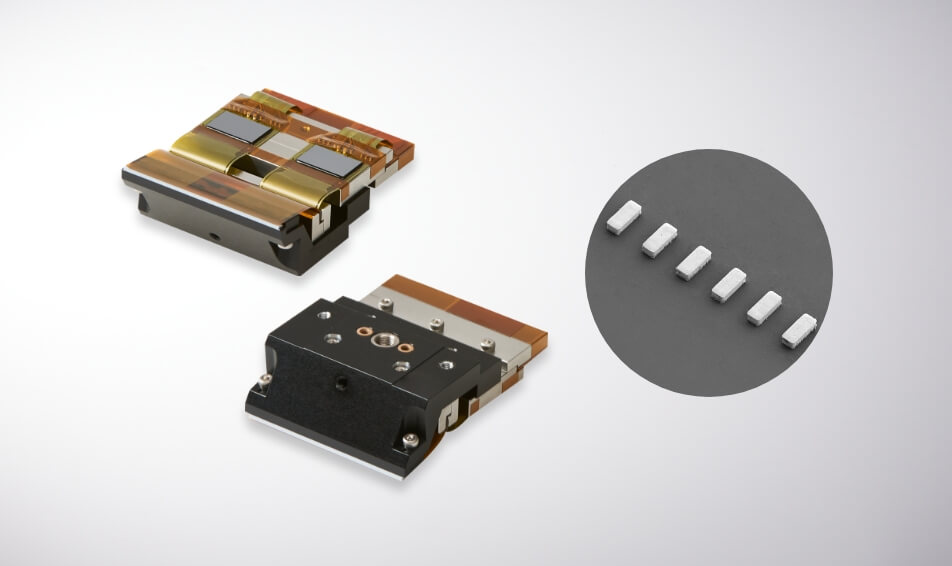
DE5
Cell process
-
01A wide range of probe configurations to choose from
-
02Selectable bump size - with/without bump
-
03Probe tip with easy visibility and alignment
-
04Probe FPC*1 and COF*2 can be replaced individually
*1 FPC:Flexible Printed Circuits *2 COF:Chip On Film
-
05COF allows for direct contact
-
06Can also be used for x-ray panel testing
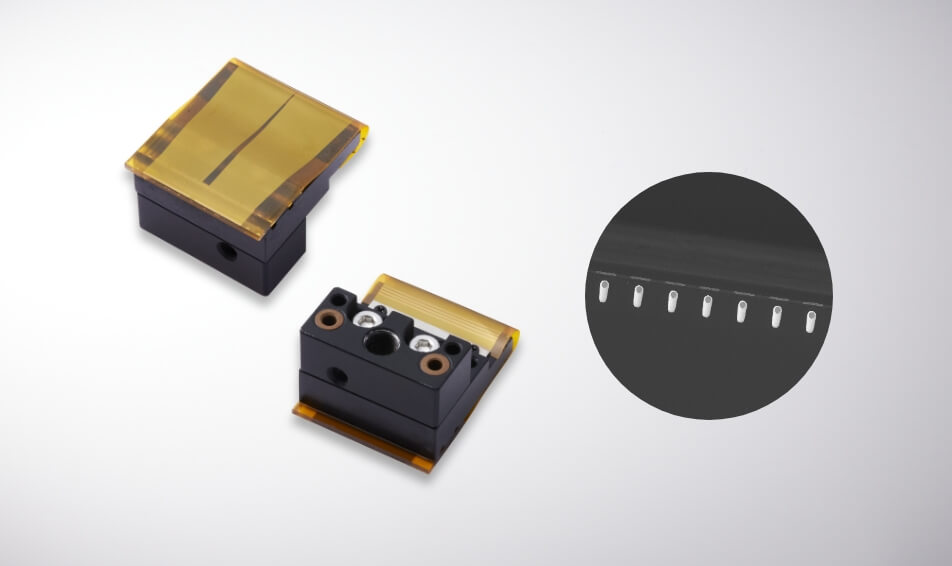
E3
Array process
Cell process
-
01A unique contact method increases resistance to foreign objects and improves durability.
-
02Probe tip with easy visibility and alignment
-
03Suitable for Chip-On-Glass (COG)-type panels
-
04Can also be used for x-ray panel testing
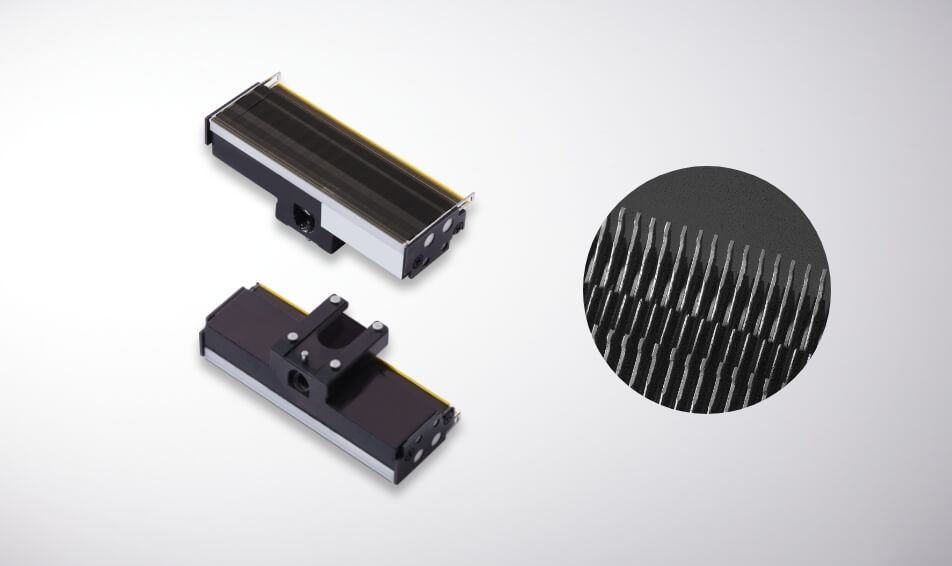
SFB(Super Fine Blade)
UFB(Ultra Fine Blade)
Array process
Cell process
-
01Probe blocks for fine pitch
-
02Highly resistant to dust and foreign objects, which allows stable contact.
-
03Allows single pin replacement, reducing maintenance costs
-
04Can also be used for x-ray panel testing
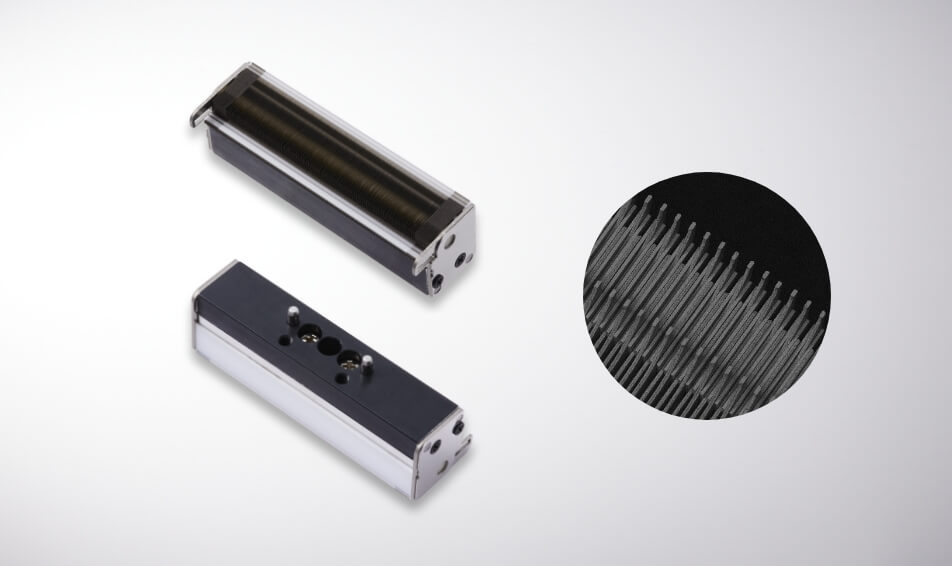
ZFB
Cell process
-
01Probe block for high pin counts and fine pitch
-
02Small with simple maintenance
-
03High probe positioning accuracy, improving contact accuracy
-
04Can also be used for x-ray panel testing
What is FPD test?
In the flat panel display (FPD) manufacturing process, tests to check panel functions and tests to evaluate the manufacturing process are conducted.
Tests in the Array Process
To test panel functions in the array process, an array test is conducted using an array tester, an array prober and a probe unit. This test is intended to test the functionality of the TFT array circuit formed for the panel on the glass substrate and detect any wire breakage or short circuit.
Meanwhile, to test the manufacturing process in the array process for the purpose of checking whether the manufacturing process has succeeded or failed and providing feedback to the previous process, TEG testing is conducted using a DC parametric tester, a TEG prober and a probe unit. (“TEG” stands for test element group, which comprises TFT, capacity element, wire element, and other elements of an array circuit.)
Tests in the Cell / Module Processes
"To test panel functions in the cell process and the module process, the lighting test is conducted.
Panels are activated and lit to display test patterns in order to check panel operation, dot defects, line defects, chromaticity, color mura (unevenness), contrast, etc.
There are two inspection methods: visual panel inspection by an operator and automated panel inspection using a CCD camera that automatically performs defect detection and the go/no-go test.
A cell tester, a cell prober and a probe unit are used for the inspection.
The module test also uses a mura inspection and compensation system that automatically detects mura or unevenness in the display and compensates light control to eliminate mura.
What is a probe unit?
A probe unit is a testing instrument to be mounted on a prober to contact the panel to transmit electrical signals for FPD testing. Probe unit types vary according to the purpose of the test, size of the panel, resolution, and other requirements.
A probe unit consists of a probe block, which contacts the FPD, and a probe base, which supports the probe block and serves as a mechanical interface to the prober (see the figure below). The probe block, which is an aggregate of fine electrical contacts (probes), contacts the FPD's driver IC contact pad to transmit electrical signals for driving the panel or testing electrical characteristics.
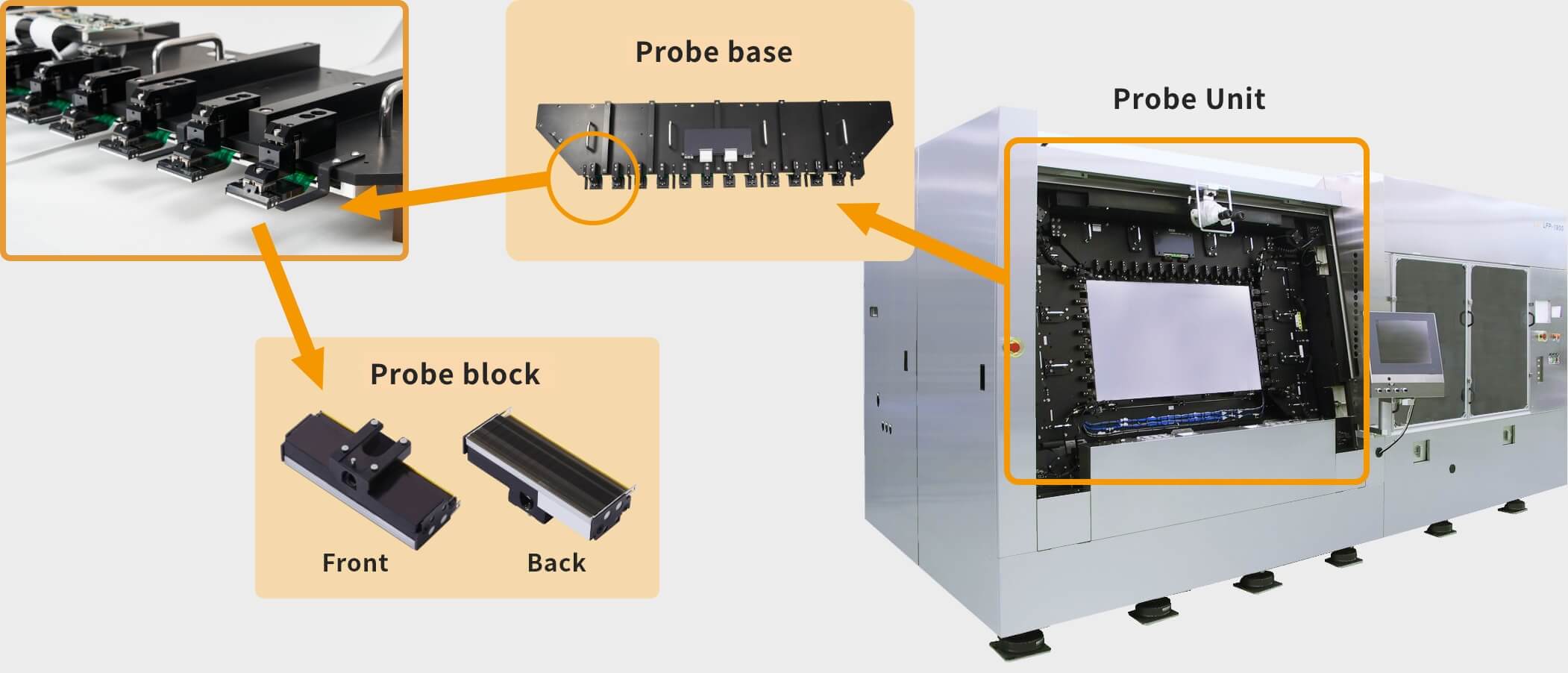
MJC provides the following two types of probes. Each type can be customized according to panel size, resolution, or other design requirements.
| Film type | Film-type probes using photolithography technology allow highly accurate and customizable probe arrangement and are used for panels with fine pitch or special pad arrangements (e.g., COG panel). |
|---|---|
| Blade type | The blade type has a structure in which thin plate blades are arranged within slits. This type allows single pin replacement for easy maintenance of the blades and features superior durability. |

